Abstract
Two elderly women have each received a monofocal intraocular lens in one eye and a 3M diffractive bifocal intraocular lens in the other eye. Both eyes were shown to have equivalent retinal/neural function by measuring contrast sensitivity to laser interference fringes which bypassed refractive and other defects of the ocular media. The eyes with a bifocal intraocular lens displayed a much greater depth of focus, though at the expense of diminished contrast sensitivity compared with the normal values expected for that age. Simulation experiments suggested that the observed reduction in contrast sensitivity was not adequately explained by a simple reduction in retinal illumination of the in-focus image as might intuitively be expected from the bifocal separation of incident light to two simultaneous focal points. The simultaneous superimposition of the out-of-focus image on the in-focus image must also be considered, since this caused a significant reduction in contrast sensitivity when the retinal illumination was insufficiently above the photopic luminance threshold.
Full text
PDF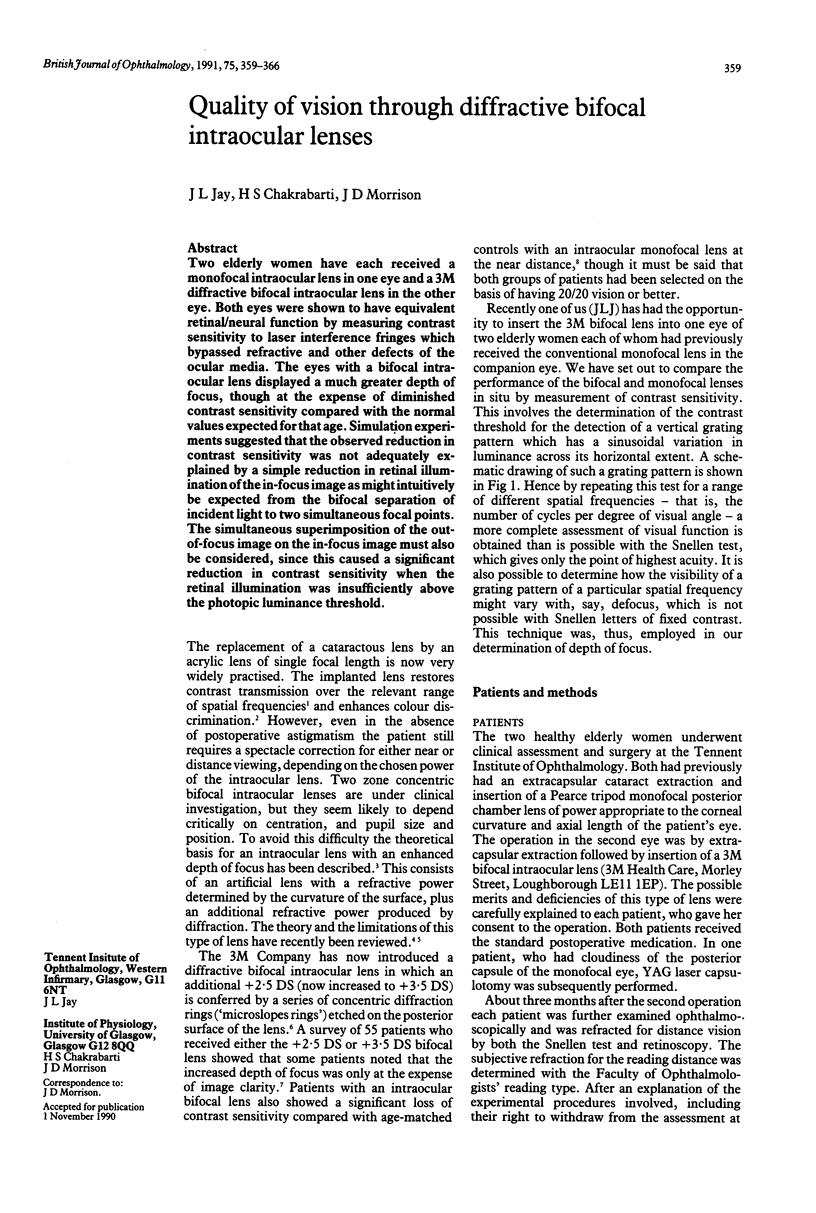
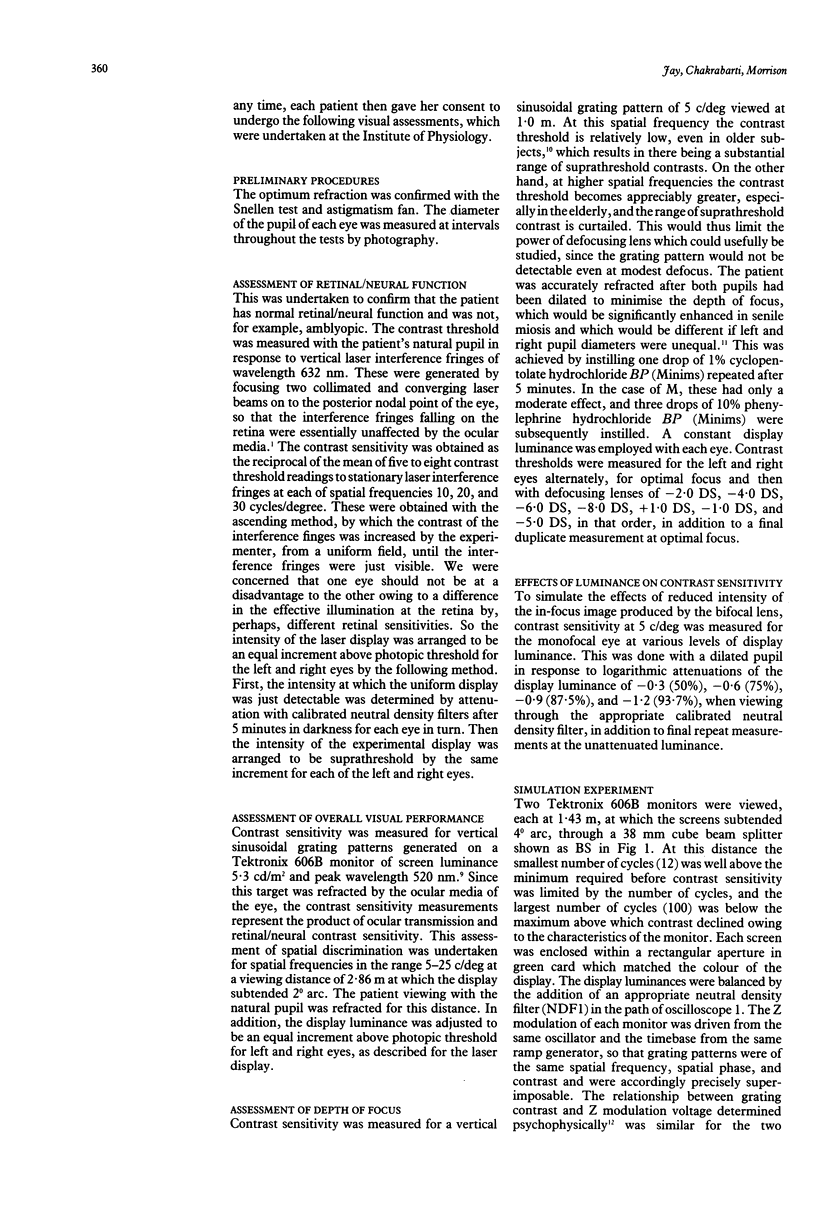
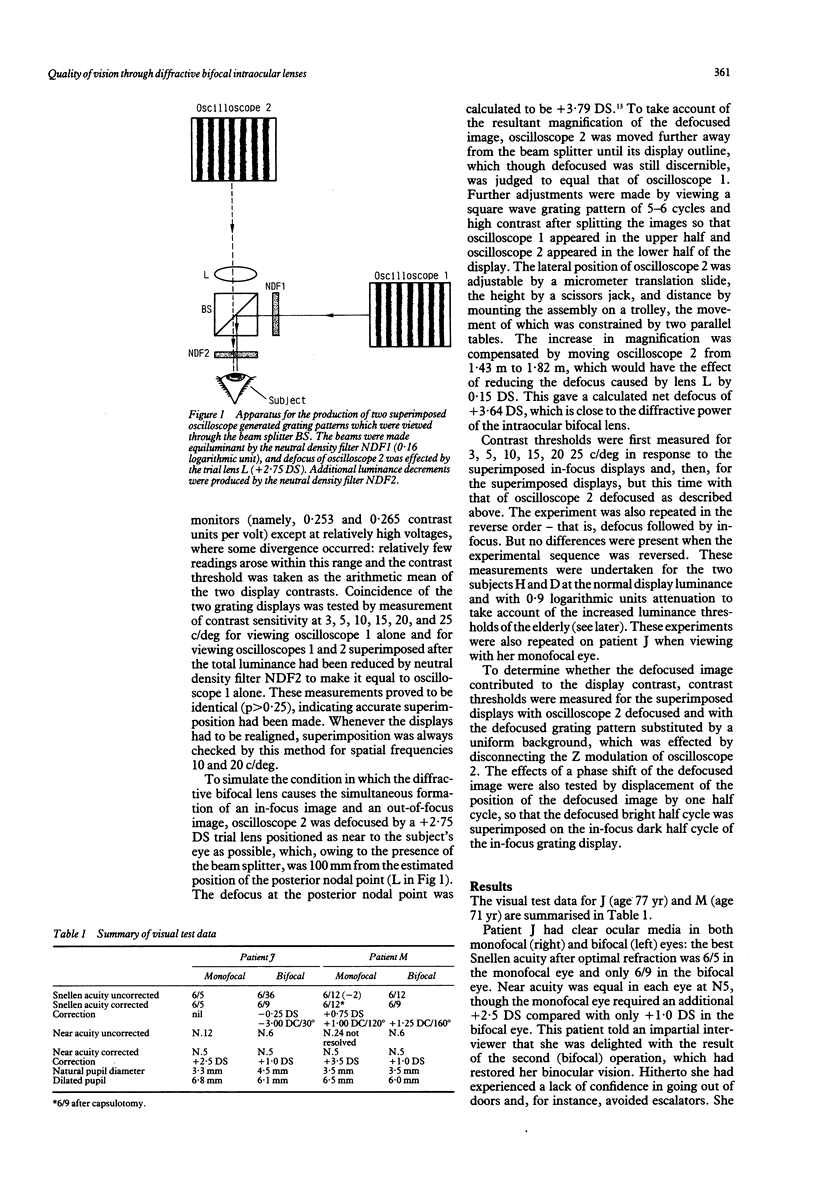
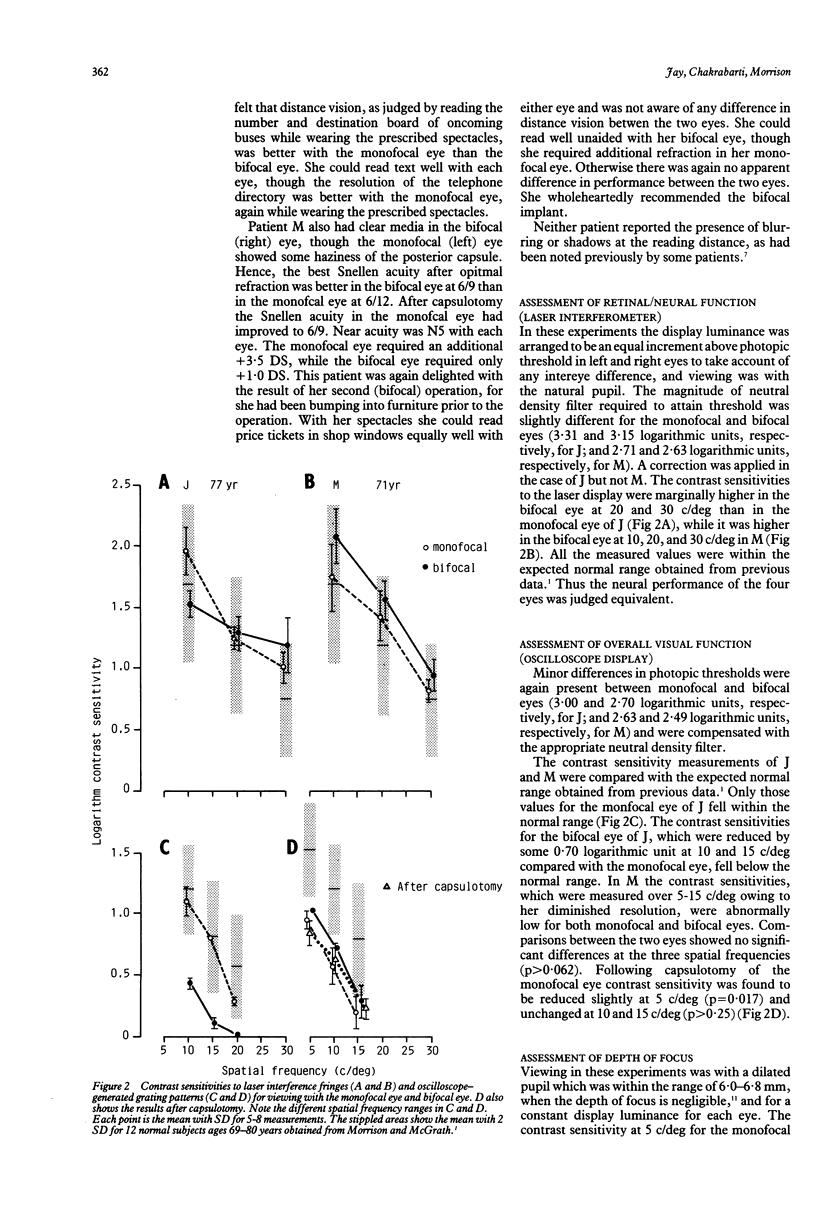
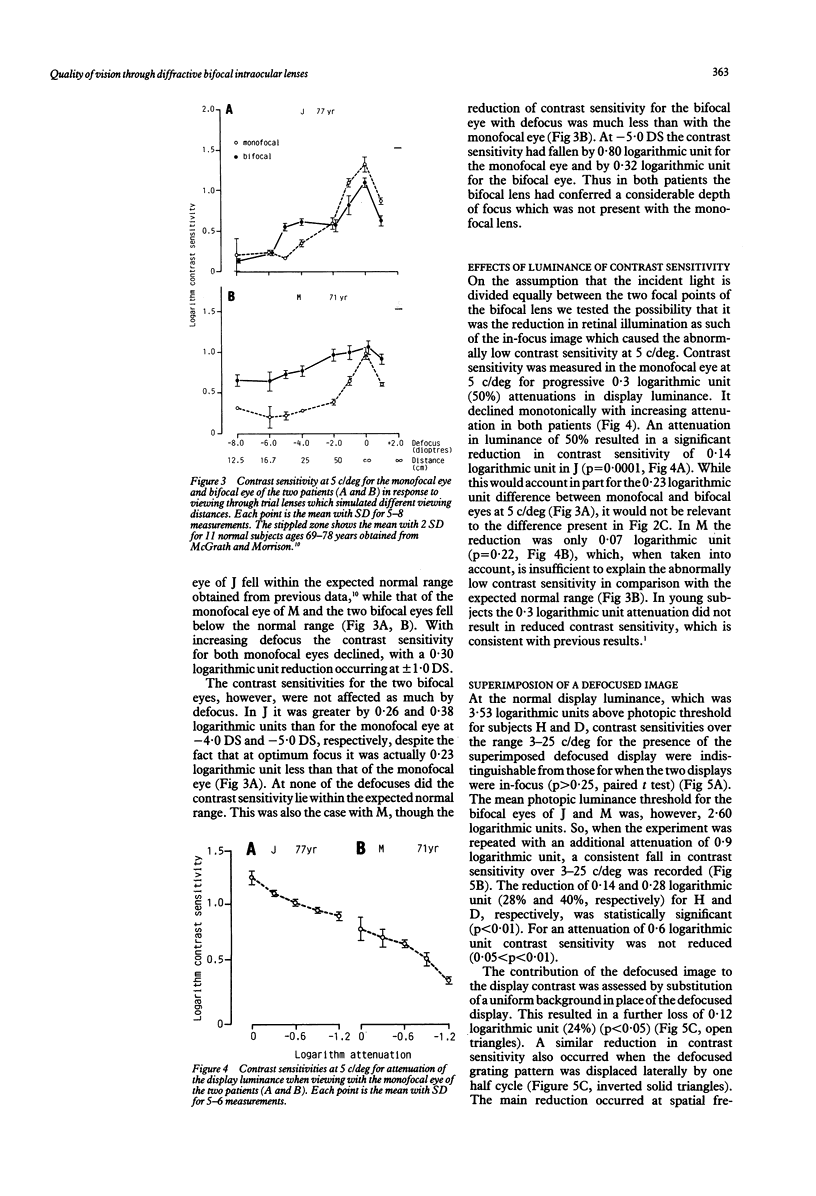
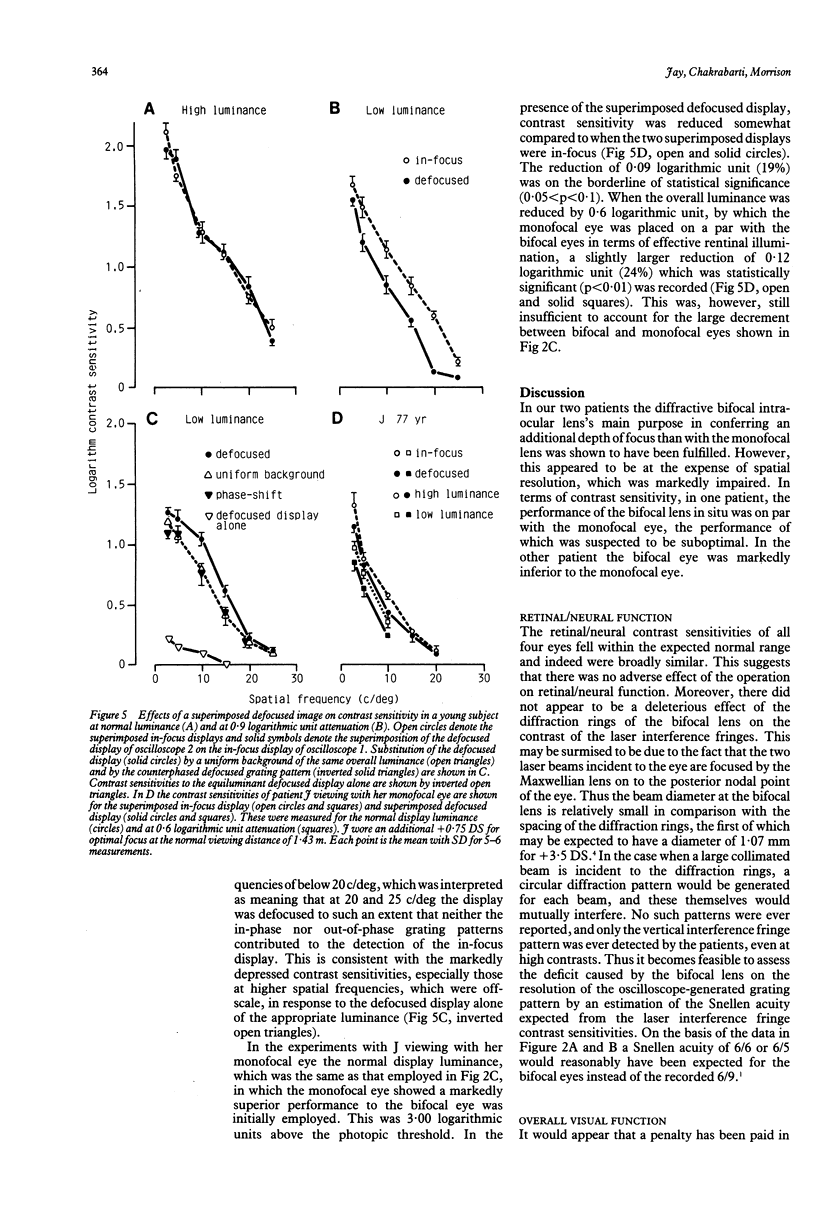
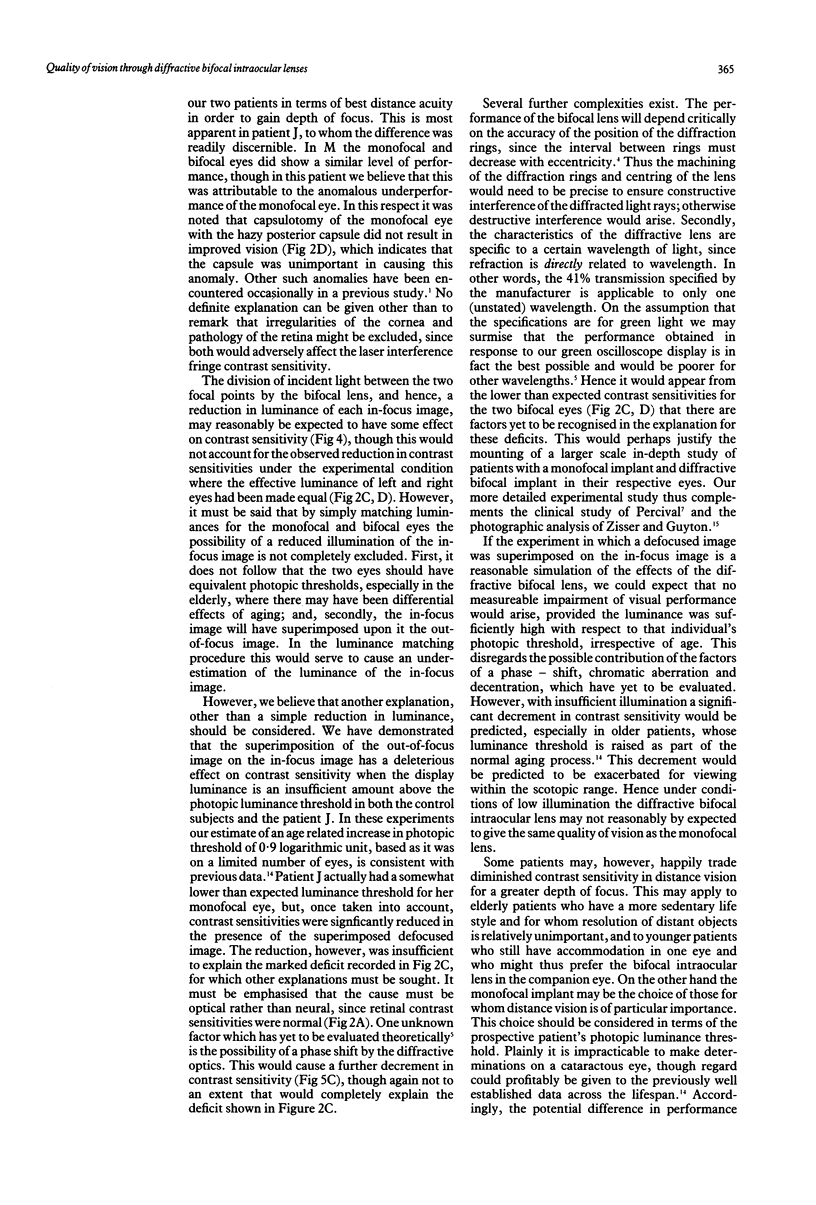
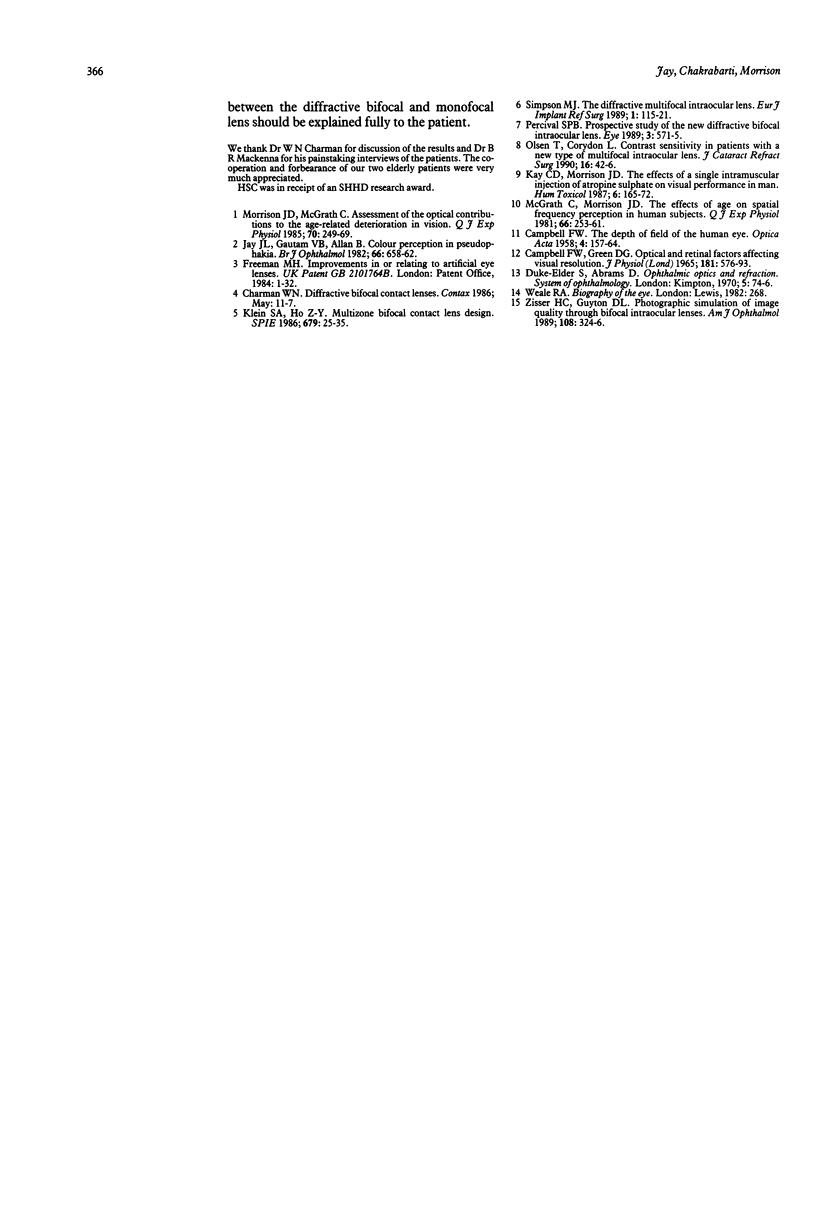
Selected References
These references are in PubMed. This may not be the complete list of references from this article.
- Campbell F. W., Green D. G. Optical and retinal factors affecting visual resolution. J Physiol. 1965 Dec;181(3):576–593. doi: 10.1113/jphysiol.1965.sp007784. [DOI] [PMC free article] [PubMed] [Google Scholar]
- Jay J. L., Gautam V. B., Allan D. Colour perception in pseudophakia. Br J Ophthalmol. 1982 Oct;66(10):658–662. doi: 10.1136/bjo.66.10.658. [DOI] [PMC free article] [PubMed] [Google Scholar]
- Kay C. D., Morrison J. D. The effects of a single intramuscular injection of atropine sulphate on visual performance in man. Hum Toxicol. 1987 Mar;6(2):165–172. doi: 10.1177/096032718700600210. [DOI] [PubMed] [Google Scholar]
- McGrath C., Morrison J. D. The effects of age on spatial frequency perception in human subjects. Q J Exp Physiol. 1981 Jul;66(3):253–261. doi: 10.1113/expphysiol.1981.sp002554. [DOI] [PubMed] [Google Scholar]
- Morrison J. D., McGrath C. Assessment of the optical contributions to the age-related deterioration in vision. Q J Exp Physiol. 1985 Apr;70(2):249–269. doi: 10.1113/expphysiol.1985.sp002907. [DOI] [PubMed] [Google Scholar]
- Olsen T., Corydon L. Contrast sensitivity in patients with a new type of multifocal intraocular lens. J Cataract Refract Surg. 1990 Jan;16(1):42–46. doi: 10.1016/s0886-3350(13)80872-3. [DOI] [PubMed] [Google Scholar]
- Percival S. P. Prospective study of the new diffractive bifocal intraocular lens. Eye (Lond) 1989;3(Pt 5):571–575. doi: 10.1038/eye.1989.89. [DOI] [PubMed] [Google Scholar]
- Zisser H. C., Guyton D. L. Photographic simulation of image quality through bifocal intraocular lenses. Am J Ophthalmol. 1989 Sep 15;108(3):324–326. doi: 10.1016/0002-9394(89)90125-6. [DOI] [PubMed] [Google Scholar]


